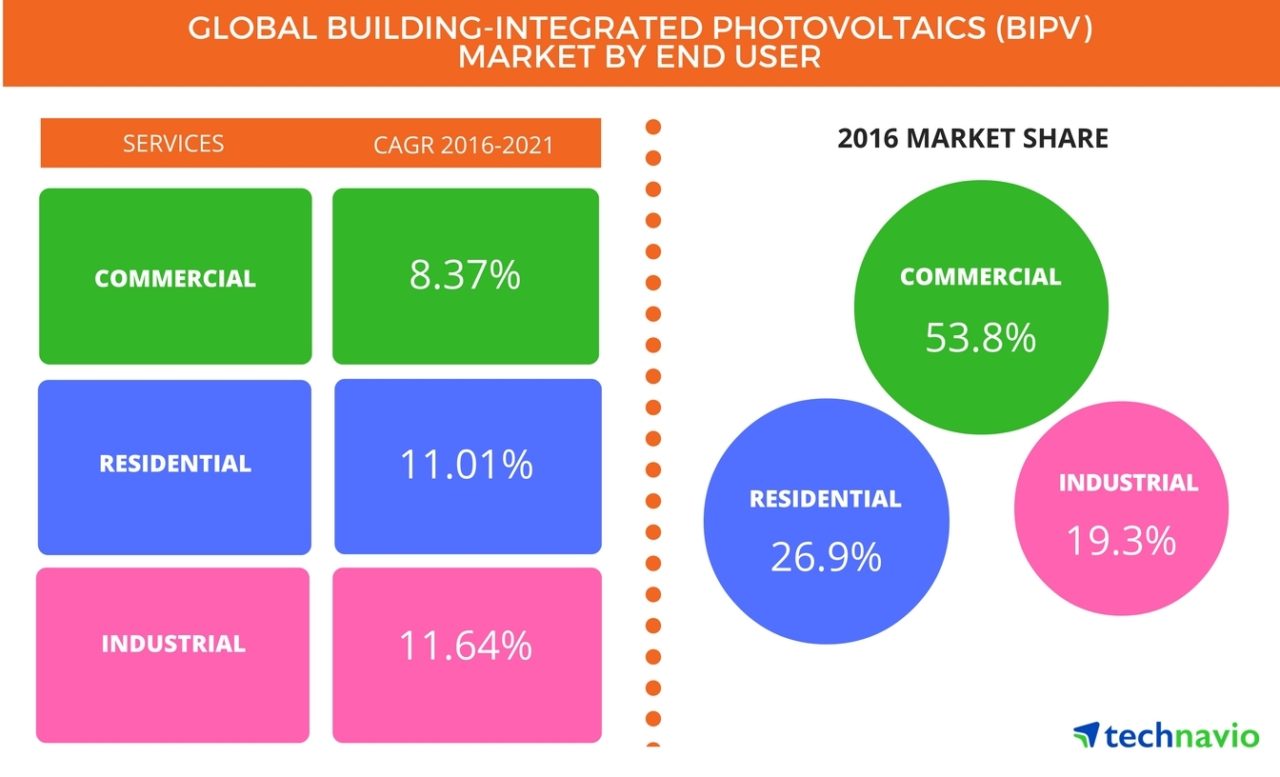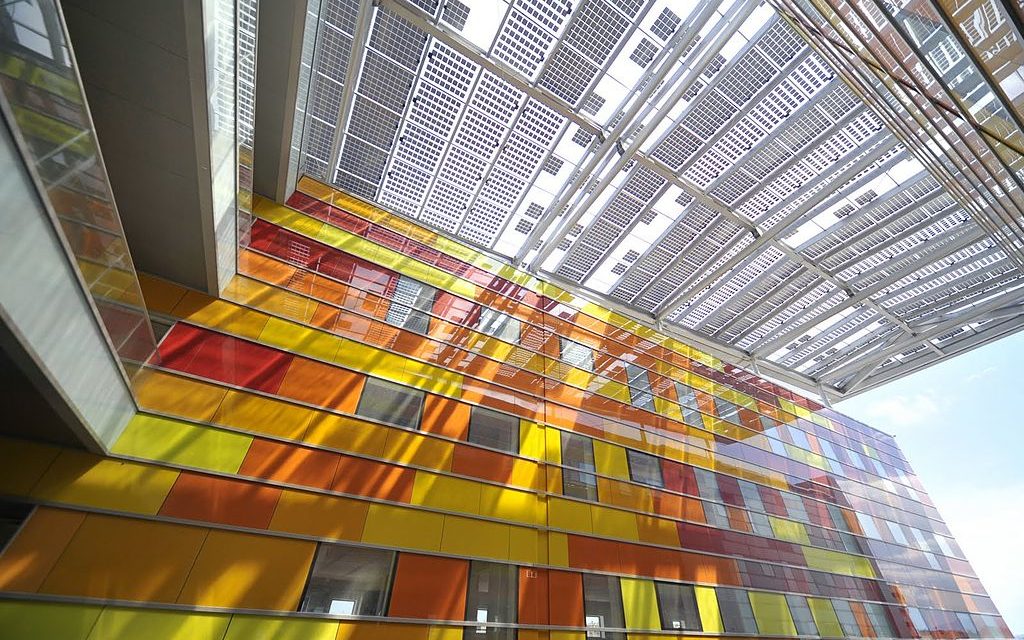According to a recent market study released by Technavio, the global building-integrated photovoltaics (BIPV) market is expected to grow at a CAGR of almost 10% during the forecast period. The report “Global Building-Integrated Photovoltaics Market 2017-2021” provides an in-depth analysis of the market in terms of revenue and emerging market trends, as well as up-to-date analyses and forecasts for various market segments and all geographical regions.
Energy cost reduction is one of the main drivers responsible for the growth of the global BIPV market. The most energy-intensive end-user segments are commercial buildings, healthcare facilities, and manufacturing plants — facilities which require round-the-clock maintenance and utilize high amounts of energy.
Growing requirement for energy certifications, hike in infrastructure spending, and increasing solar energy consumption and installation are other important drivers responsible for the growth of the market. Due to these factors, the global BIPV market is forecast to be valued at $1.14 billion by 2021.

Technavio has published a new report on the global building integrated photovoltaics (BIPV) market from 2017-2021
“The commercial sector is a major end-user of BIP systems, with a majority market share of over 50%. A major part of the demand is created by governments focusing on energy management system and BIPV technologies to improve the overall building efficiency. Governments are encouraging the adoption of BIPV solutions by providing financial incentives for the development of alternative energy sources like solar as they curb carbon emissions,” says Thanikachalam Chandrasekaran, one of the lead analysts at Technavio for energy storage research.
The commercial sector is forecast to grow steadily during the forecast period, driven by the growing demand for office space, hospitals, and other commercial organizations. The adoption of BIPV systems has improved the return on investment (ROI) of various commercial buildings by ensuring maximum energy savings. The US government has brought forth initiatives to increase energy efficiency of commercial buildings by 20% within 2020 and offers incentives on adoption of clean energy technologies and cost-effective upgrades.
The residential segment is forecast to quickly increase market penetration rates in the forecast period due to an increased adoption of these systems by consumers. Decline in prices of solar panels and a growing number of people with increased environmental awareness are the key drivers of this market segment. As these systems are cost-effective and eco-friendly, governments worldwide encourage homeowners to install small-scale BIPV plants.
Consumers in this sector are investing in smart and trendy energy savings options. The growing urban population in developing countries like China will drive the demand for energy, and in turn the market. In India, there is a growing focus on smart cities, which is attracting a large number of BIPV vendors. This move will also lead to the integration of BIPV in smart buildings, thus making the residential sector the highest growing segment of the market during the forecast period.
“The industrial sector is forecast to grow the quickest, with a CAGR of almost 12% through the forecast period. The use of solar-powered devices such as BIPV is one of the most effective methods of cutting down on energy usage in manufacturing facilities. Companies can create targets, monitor consumption, and adjust the BIPV systems to ensure optimal energy consumption,” says Thanikachalam.
The adoption of BIPV systems in the industrial sector has increased after the introduction of ISO 50001, which is an energy standard for the management of energy policies for and fix targets and objectives. During the forecast period, the major growth in the global BIPV market will be fueled from the markets in APAC. BIPV systems are deployed to cater to the growing need for energy conservation and cost-effective powering solutions.
About Technavio
Technavio is a leading global technology research and advisory company. The company develops over 2000 pieces of research every year, covering more than 500 technologies across 80 countries. Technavio has about 300 analysts globally who specialize in customized consulting and business research assignments across the latest leading edge technologies.
Technavio analysts employ primary as well as secondary research techniques to ascertain the size and vendor landscape in a range of markets. Analysts obtain information using a combination of bottom-up and top-down approaches, besides using in-house market modeling tools and proprietary databases. They corroborate this data with the data obtained from various market participants and stakeholders across the value chain, including vendors, service providers, distributors, re-sellers, and end-users.




